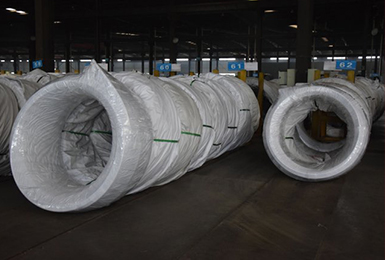Dec . 01, 2024 11:07 Back to list
Operation of Basic Oxygen Steelmaking Plant for Efficient Steel Production
The Basics of Oxygen Steelmaking Revolutionizing the Steel Industry
The modern steel industry, a cornerstone of industrial development, has undergone significant transformations over the decades. One of the most influential processes in steel production is the Basic Oxygen Steelmaking (BOS) method. This innovative technology has played a pivotal role in enhancing the efficiency, quality, and environmental sustainability of steel production.
Historical Context
Before the advent of Basic Oxygen Steelmaking, the production of steel was primarily dominated by older methods such as the open hearth process and electric arc furnaces. These traditional methods were considerably slower and less efficient, leading to higher production costs and greater energy consumption. The introduction of the BOS method in the late 1950s marked a turning point, as it combined speed, efficiency, and reduced costs, revolutionizing the way steel was made.
The Process of Basic Oxygen Steelmaking
The Basic Oxygen Steelmaking process is characterized by the use of a converter, where molten iron from a blast furnace is converted into steel. The key to this process is the injection of pure oxygen into the molten iron. This high-purity oxygen helps to oxidize impurities such as carbon, silicon, and manganese, thereby transforming the molten iron into steel.
The process begins with charging molten iron into the converter alongside scrap steel, which acts as a supplementary source of iron and other alloying elements. Once the charge is prepared, a lance is lowered into the converter, and oxygen is blown in at high speeds. This rapid injection of oxygen leads to a series of exothermic reactions that raise the temperature and effectively purify the steel. The entire process typically takes about 20 to 40 minutes, a stark contrast to the hours required in previous methods.
Advantages of the BOS Process
One of the main advantages of the Basic Oxygen Steelmaking process is its efficiency. The ability to utilize recycled scrap steel not only reduces the reliance on raw materials but also minimizes waste. The high productivity of this method allows steel manufacturers to meet the increasing global demand for steel while keeping costs manageable.
basic oxygen steel making factory

Furthermore, the BOS process offers significant environmental benefits. By utilizing oxygen instead of air, the process reduces the emission of harmful pollutants commonly released during traditional steelmaking. The reaction generates fewer sulfur and nitrogen oxides, making it a cleaner alternative. Additionally, the reduced energy consumption in the BOS process contributes to lower carbon footprints, aligning with global sustainability goals.
Technological Advances
Over the years, various technological advancements have further improved the Basic Oxygen Steelmaking process. Automation, real-time monitoring, and advanced control systems enhance precision and efficiency. Innovations such as increased lance efficiency and better temperature management have made it possible to produce high-quality steel with reduced energy input.
Moreover, the integration of digital technologies, including data analytics and artificial intelligence, is transforming the way steelmakers operate. These technologies enable manufacturers to optimize production processes, predict maintenance needs, and reduce operational risks.
Challenges and Future Perspectives
Despite its numerous advantages, the BOS process is not without challenges. The fluctuation in scrap steel prices can impact overall production costs, and the industry must constantly seek methods to improve the recycling rate of steel to sustain its materials supply chain.
Looking ahead, the steel industry is poised to embrace further innovations that will address these challenges. Researchers are focusing on developing new alloys and exploring the use of alternative, greener energy sources. The push towards carbon-neutral steelmaking techniques, such as hydrogen-based methods, represents the future of the industry as it strives for greater sustainability.
Conclusion
In conclusion, Basic Oxygen Steelmaking has fundamentally changed the landscape of the steel industry, making it more efficient and environmentally friendly. As the world increasingly demands sustainable practices, innovations stemming from the BOS method can lead the way in producing high-quality steel with reduced environmental impacts. The ongoing evolution of this technology will be crucial in shaping the future of steelmaking, ensuring that it not only meets the needs of modern society but does so in a way that protects our planet for future generations.
-
Top Carbon Petroleum Coke Exporters – Reliable Manufacturer & Supplier
NewsJul.24,2025
-
Environmentally Friendly Granule Covering Agent for Sustainable Solutions
NewsJul.23,2025
-
High-Performance Tundish Dry Vibrator for Continuous Casting
NewsJul.22,2025
-
First Bauxite Exporters | Top-Quality Global Supply
NewsJul.22,2025
-
```text High-Performance Insulation Cup Materials Exporters | Quality
NewsJul.21,2025
-
High-Efficiency Ferro-Carbon Balls for BOF Steelmaking
NewsJul.20,2025
